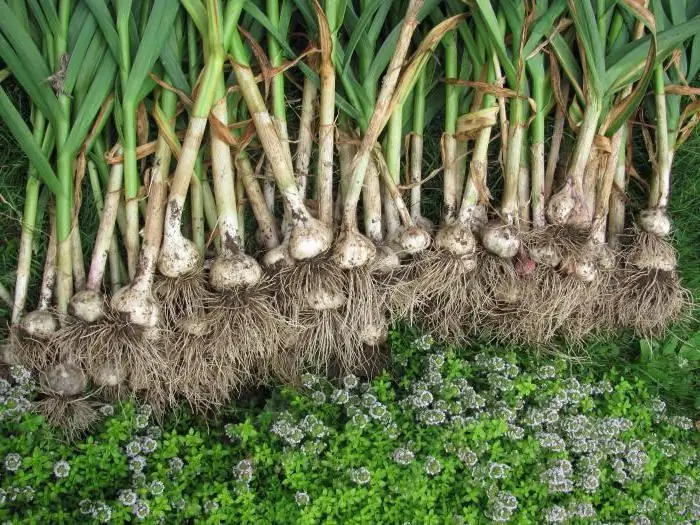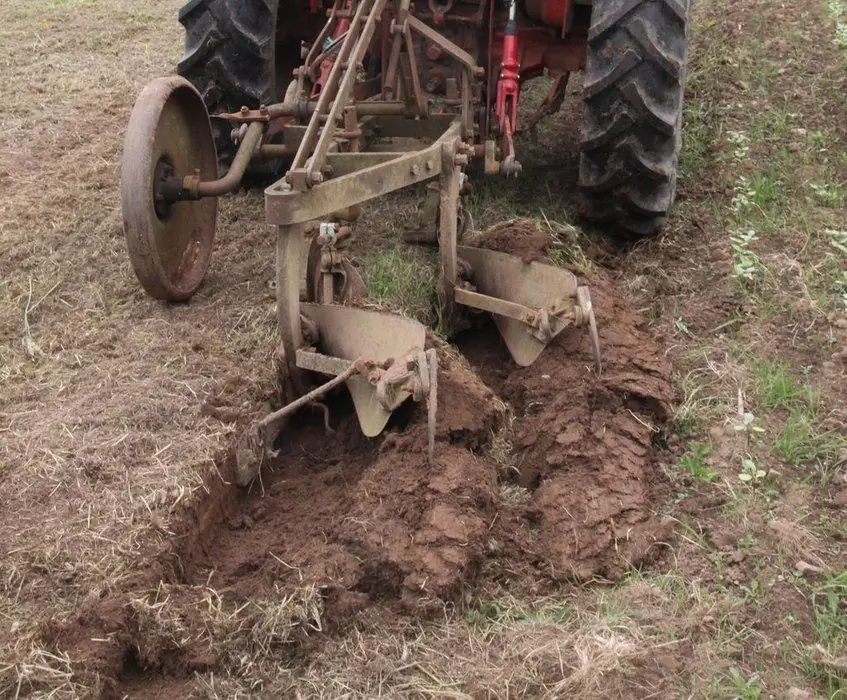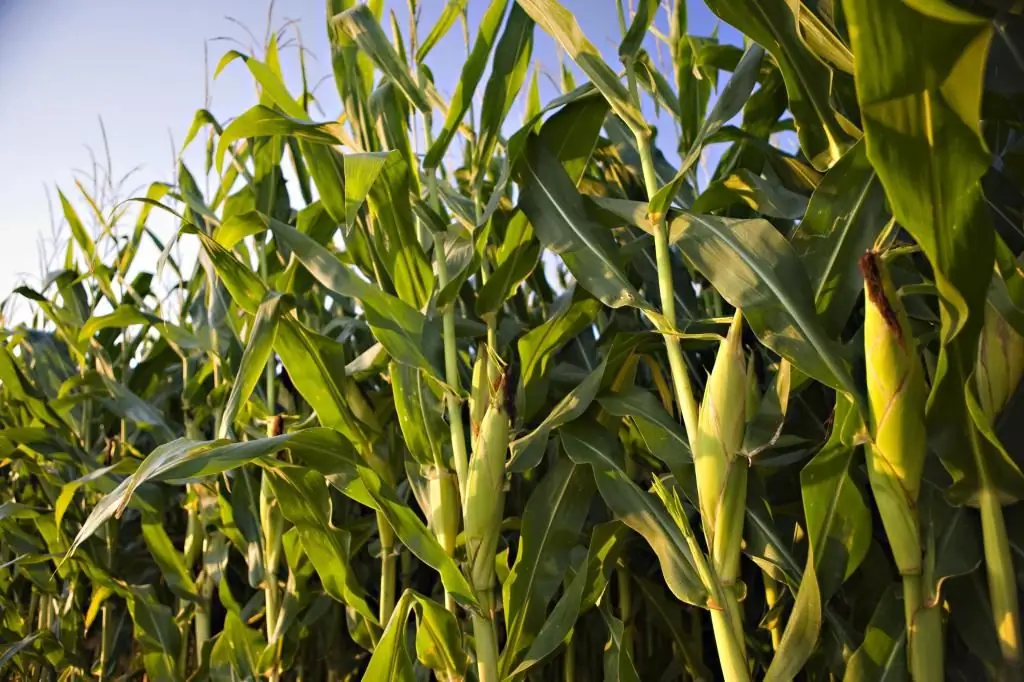2026 Author: Howard Calhoun | [email protected]. Last modified: 2025-01-24 13:10:43
Stubble stubble is called agricultural work on loosening and mixing the topsoil to a depth of 5-15 cm to control weeds and their seeds, pests and their larvae, in order to retain moisture and increase fertility. Precedes autumn plowing. As a rule, the procedure is carried out immediately or during the harvest of grain and other crops with special units.
Destination
In the days of the late USSR, when the development of agriculture reached its peak, stubble peeling activities were commonplace and were used everywhere. However, after the collapse of the Soviet Union, the technological operation was excluded for a number of reasons (mainly economic ones) in many regions. Meanwhile, the experience of subsequent decades has shown that this procedure is by no means superfluous in crop rotation.
Pulling prevents:
- Evaporation from the soil layer of moisture, especially increasing after harvesting leguminous combines.
- Spread of various pathogens (e.g. ergot,powdery mildew, root rot, rust, etc.)
- Development of insect pests, including their eggs, pupae, larvae.
- Growth of vegetative mass of perennial plants, weed seeding.
In the CIS countries, the land is mainly cultivated with special disk mechanisms - cultivators "LDG 10/15/20" or similar units.

Technology violations
In the conditions of the middle lane, soil preparation is divided into three types of operations:
- preliminary;
- main;
- pre-sowing.
In each of them, according to science, agrotechnical measures for peeling are mandatory both before the use of dump and resource-saving equipment. However, many enterprises, farmers and private traders ignore the stage in order to save fuel and / or working hours, considering these works to be insignificant.
Farms where the procedure is ignored subsequently face an increase in the number of pests, soil diseases, infestation with weeds. To combat them, additional funds are allocated, pesticides are used in large quantities. In addition, the main autumn plowing due to untreated turf or stubble turns out to be of poorer quality, aggregates and mechanisms experience a significant load, as a result of which their resource is reduced. Peeling after grain harvest is especially important. If it is not carried out, the earth quickly dries up and becomes stiff, plowing such a field becomes a difficult task for the machine operator.

Moisture retention
Accumulation and retention of moisture due to agrotechnical measures is carried out in different ways. After peeling, the soil becomes loose with a large number of non-capillary large pores. Autumn rains fill them with water, which evaporates slightly.
Small capillaries penetrating compacted soil, on the contrary, conduct moisture from saturated layers to drier ones. As a result, the water either evaporates or goes deeper. During processing, the capillary system is destroyed, which prevents the earth from drying out.
Moisture also accumulates in rough fields as a result of steam distillation to the upper layers from the wetter lower horizons. Condensation occurs at the border of the uncultivated and loosened soil layers. Observations have shown that after working in the field of cultivators, the required concentration of liquid in the ground not only remains, but also increases.

Anti-weed effect
Although grain harvesting occurs quite early, by this time a number of early weeds, such as pikulnik, knotweed, wild radish and others, have time to ripen. In the process of harvesting, their seeds are shed over much larger areas than in the wild. In addition, 1/2-year-old (cornflower, chamomile, bedstraw) and perennial weeds (chistets, various types of wormwood) remain in the stubble. Especially "harmful" are thistle and creeping wheatgrass. The longer a field is left uncultivated, the more weeds take root, clogging the soil.
Another point is that the crumbled seeds of wild plants andcereals after harvesting remain on the surface and do not germinate. If plowing is carried out without pre-treatment, the seeds are buried in the ground and the next year they “please” with friendly shoots. Perennials do not lag behind, accumulating nutrients in the root system.
Stubble plowing, carried out in August/September, allows the seeds to be buried at a shallow depth and at the same time cuts off the shoots of the plants. Thanks to the persistent warm weather and activated rainfall, the seeds germinate, and the perennials restore their green mass, consuming the stored nutrients and thereby weakening. Subsequent autumn tillage destroys seedlings and prevents weed growth.

Due dates
Efficiency of post-harvest peeling directly depends on the timing. It is most expedient to carry out peeling work in the field behind the combine. In this case, the stubble will be soft enough, not overdried. Straw is pre-stacked and, if possible, the straw is taken away.
A positive effect is observed even if the treatment is carried out a few days after harvesting, but no later than one week. Statistics show that grain spring crops have an increase in yield by 2-3 centners per hectare. Late deadlines reduce or eliminate the positive effect.
Fuel savings
Besides the benefits from the point of view of agronomy, stubble plowing in the future will significantly save fuel in the process of autumn (main) tillage. Performance indicators reach10-15% in comparison with the cost of fuels and lubricants, if the plowing is processed without preliminary disking.
Economy of fuel and lubricants is due to the fact that peeling works prevent the loss of soil moisture, which in turn reduces the density of the arable layer. The resistance of the soil-cultivating aggregates or plows is reduced by 20-35%, the overall productivity increases up to 20% as a result.

Stubble breaking technology
If earlier harrows were used for peeling, today they are increasingly being replaced by discators (cultivators). Their advantage, due to the use of spherical rotating discs, is less resistance from soil and vegetation, as well as the ability to adjust the depth of placement, depending on the design, within the range of 3-25 cm. The working speed is 10-25 km/h.
When choosing the depth of peeling and the model of the unit, they are based on such parameters as the granulometric composition of the cultivated land, moisture content, stubble type and the degree of clogging with forbs. Light soils are disked to a shallower depth, heavy soils to a greater depth. For example, if annual weeds predominate on the site, in the dry period the incorporation is carried out to a depth of 6-8 cm (so that there is enough moisture for seed germination), in the rainy period - 5-6 cm. In addition, the use of discs (unlike a harrow) allows you to cut at an angle the stems and roots of perennials, as a result of which a significant part of them dies, and the rest is destroyed by winter plowing.
If the field is highlylittered with couch grass or other rhizomatous weed, disc harrows with a finer pitch are used. On stony soils, chisel cultivators with lancet shares are used.

Cultivator "LDG 10"
This model is widely used in the CIS. This is a simple in design, cheap and easy to operate unit of disk design. The equipment is attached to any tractor, even a low-powered one. A distinctive feature is the flexible adjustment of the discs and instantaneous transfer from the transport position to the working position, which allows you to process fields with difficult terrain, small household plots, edges along the forest, bushes, swamps.
"LDH 10" consists of:
- frame based on pneumatic wheels;
- working sections;
- overlapping disc battery;
- rods mounted on carriages.
Carriages, in turn, include a bar with caster wheels and a hydraulic cylinder with a setting screw that allows you to set the processing depth.
Recommended:
Corn silage: cultivation, harvesting and storage technology

Corn silage is a valuable feed that can form the basis of the diet of various animals and birds. However, its harvesting is a complex process that will be useful for many agricultural workers to understand
Garlic cultivation as a business: a business plan, methods and features of technology. Growing garlic on an industrial scale

The owners of suburban areas, by definition, have a few more opportunities to organize a home business. You can, for example, not only engage in gardening or growing fruits and vegetables, but also have pets. Although, of course, many summer residents and aspiring entrepreneurs prefer crop production to caring for animals. This is not only a less labor-intensive undertaking - growing vegetables and fruits does not require such large financial investments and pays off faster
Sudan grass: cultivation technology, seeding rate, seeds and biological features

Sudan grass is one of the best fodder plants in terms of nutritional value and productivity. Subject to the cultivation technology, they collect up to 800-1000 centners of green mass per hectare
Spring wheat: cultivation technology, features of sowing, cultivation and care

About 35% of all grain plantings on the planet today falls on wheat. In purchases, the share of such grain is 53%. Technologies for growing spring wheat in Russia can be used differently. But when cultivating this crop, crop rotation must be observed and careful preliminary preparation of the soil must be carried out
Corn: cultivation technology, features of planting, cultivation and care

Every one of our compatriots has seen and tasted corn. However, not everyone thinks about how important culture it is. Therefore, tell about it in more detail. We will also dwell briefly on the technology of corn cultivation - it will be very useful for novice farmers to learn about this

